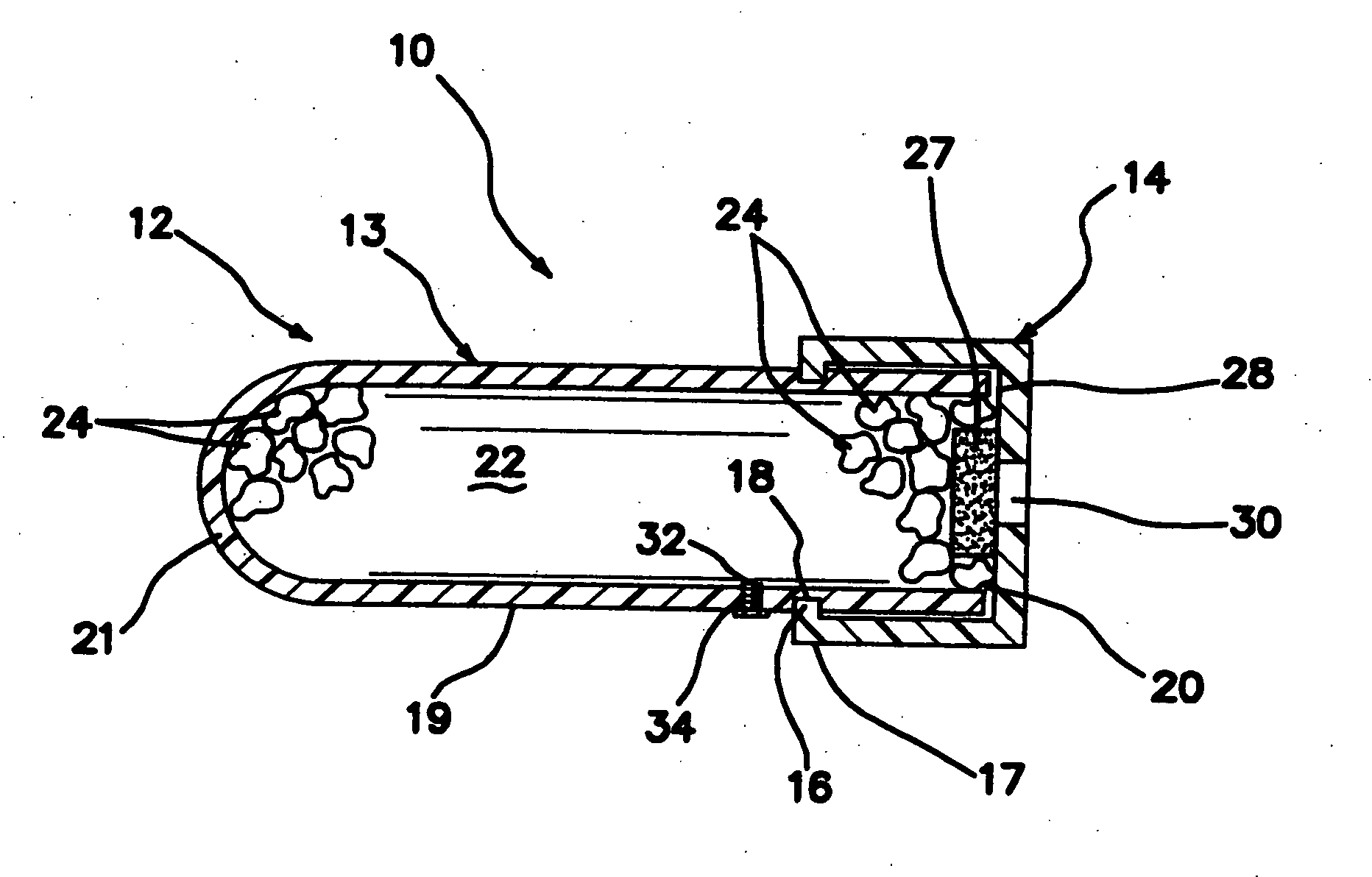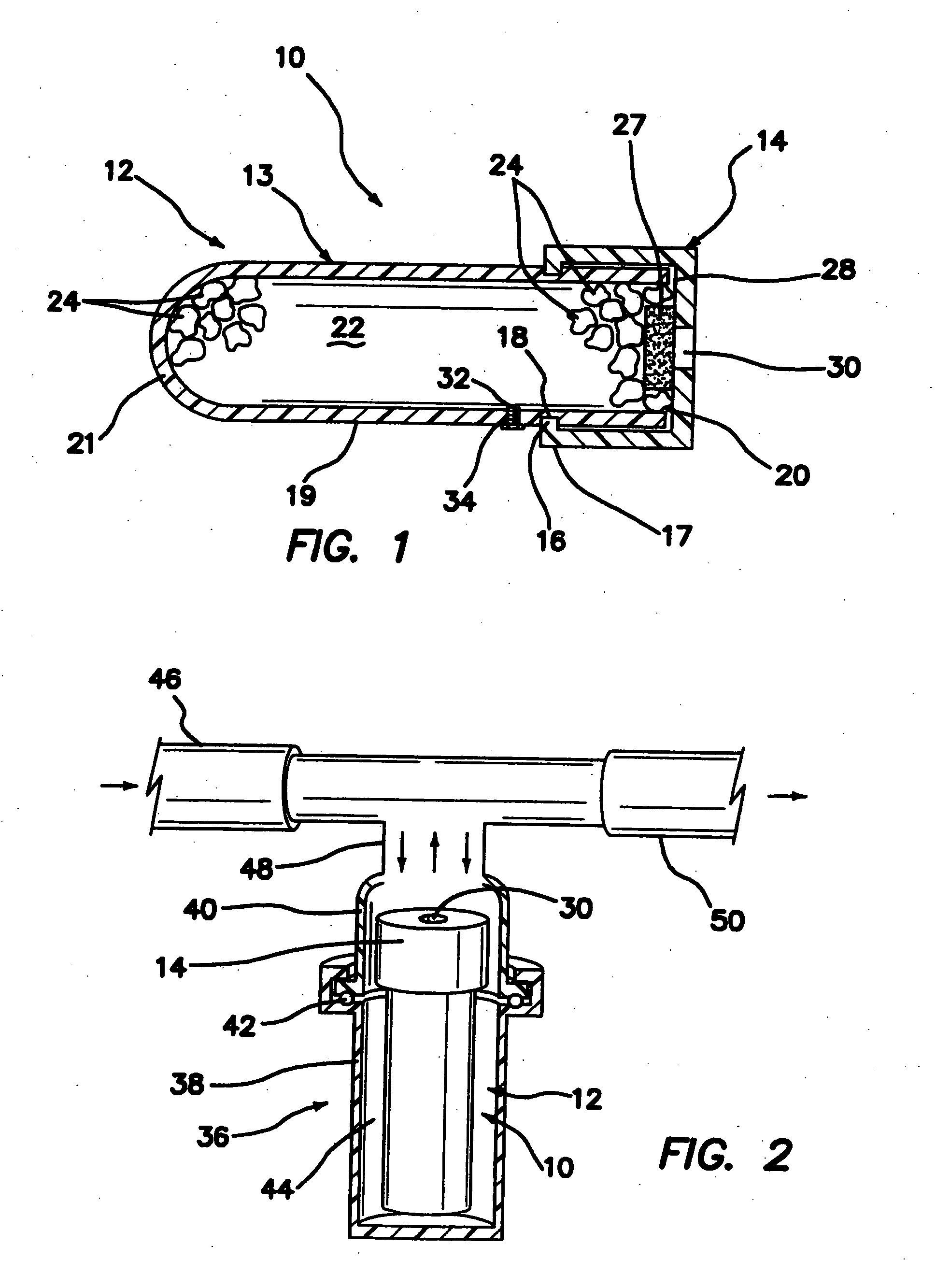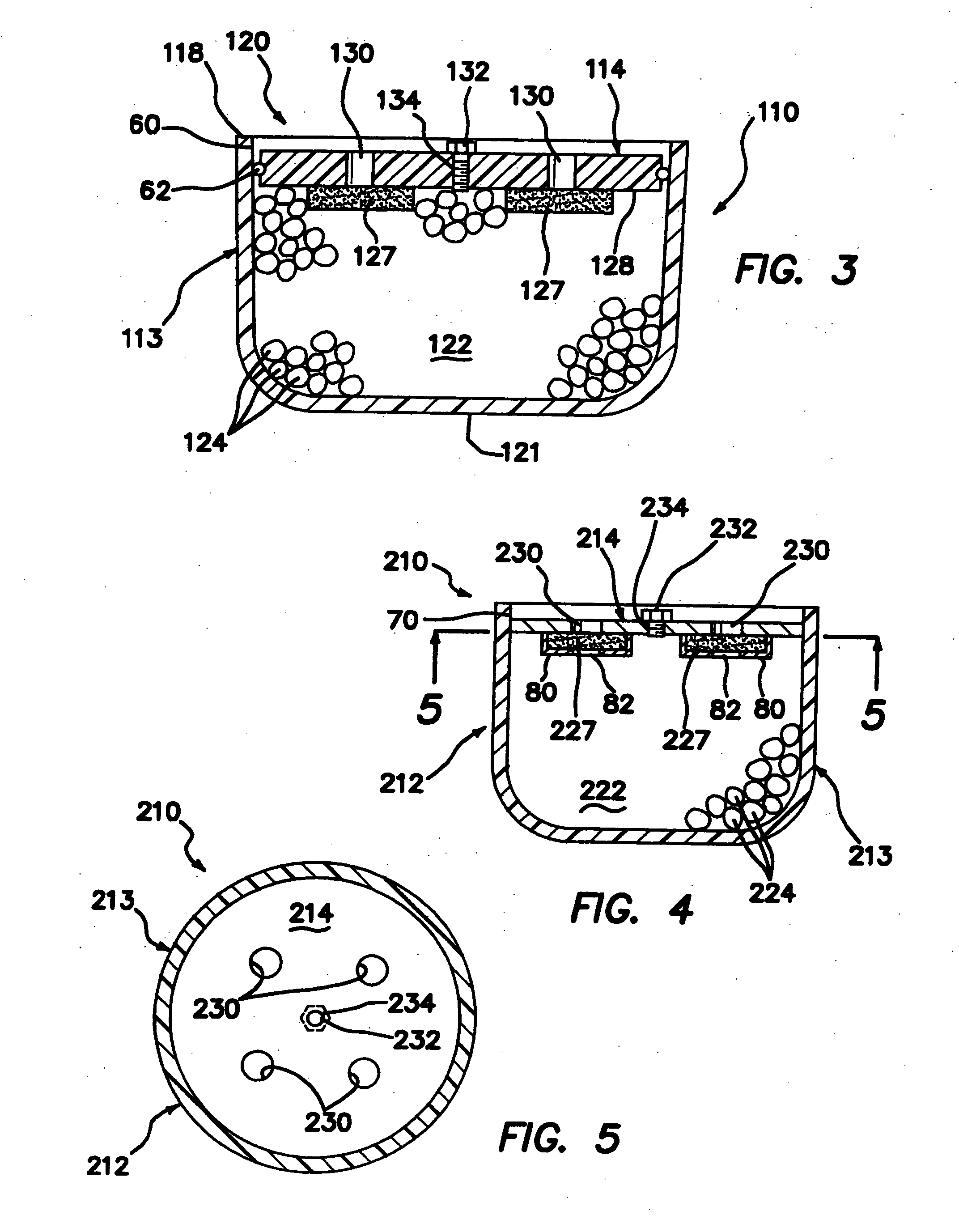Devices and methods for controlled release of additive compositions
a technology of additive compositions and devices, applied in the direction of dissolving, water/sewage treatment by ion exchange, water/sewage treatment, etc., can solve the problems of insoluble components of the present apparatus that may or may not be reused, and achieve the effect of high effectiveness and convenient control of the releas
- Summary
- Abstract
- Description
- Claims
- Application Information
AI Technical Summary
Benefits of technology
Problems solved by technology
Method used
Image
Examples
example 1
[0125]Referring now to FIG. 1, container 10 comprises a PVC casing 12 including a solid, open ended, generally cylindrically shaped casing body 13 and an end cap 14, which are fitted onto the casing body using a pair of pegs 16, inwardly extending from an end 17 of the cap 14, fitted into an annular groove 18 in the outer sidewall 19 of the casing body. The casing body 13 has an open end 20 and an opposing closed end 21. The casing 12 defines a hollow interior 22.
[0126]Provided within the hollow interior 22 are particles 24 containing an additive composition comprising a mixture of conventional corrosion inhibitors, scale inhibitors and defoamers, such as the composition sold by Fleetguard under the trademark DCA-2. The coolant composition to be treated using container 10 is an industrial aqueous liquid composition, for example, an aqueous-based liquid coolant used in a cooling tower.
[0127]A porous membrane 27 is adhered to the inner wall 28 of the end cap 14 and covers an opening 3...
example 2
[0135]As shown in FIG. 2, container 10 (as shown in FIG. 2) is positioned in vertical alignment with cylindrical housing 36 provided in a “bypass” configuration with a coolant system, for example, a cooling tower system. A representative diameter for the opening 30 in end cap 14 is 9 mm. As shown, housing 36 includes a housing body 38 and a housing top 40 which interlock to secure the container 10 within the housing 36. A housing O-ring seal 42 is provided between housing body 38 and housing top 40 to seal the interior space 44 of housing 36.
[0136]Coolant (liquid composition) flows from inlet line 46, enters and exits housing 36 through pipe segment 48, and exits via exit line 50. While inside housing 36, coolant passes in and out of opening or orifice 30, wetting membrane 27 and causing the release, for example, through diffusion, of additive composition from the particles 24 in casing 12 into the coolant. Generally, the liquid coolant flows into the inlet line 46 by the action of ...
example 3
[0138]Turning now to FIG. 3, an additional container 110 of the present invention is shown. Except as expressly described herein, additional container 110 is structured and functions substantially similarly to container 10.
[0139]The container 110 generally comprises a bowl-shaped, liquid-impermeable casing body 113 having a hollow interior 122 filled with particles 124 of an additive composition, for example, as described in Example 1. The casing body 113 has a relatively wide open top end 120 which is, for example and without limitation, circular in shape, and an opposing closed end 121. The container 110 further comprises a cap member 114 disposed across, and preferably substantially completely covering, the open end 120.
[0140]The container 110 is useful in a coolant (liquid composition) line or a coolant sump, for example, of a cooling tower system (not shown). For example, container 110 may be placed in the coolant line, for example, in a manner analogous to that shown in FIG. 2...
PUM
| Property | Measurement | Unit |
|---|---|---|
| diameter | aaaaa | aaaaa |
| diameter | aaaaa | aaaaa |
| diameter | aaaaa | aaaaa |
Abstract
Description
Claims
Application Information
 Login to View More
Login to View More - R&D
- Intellectual Property
- Life Sciences
- Materials
- Tech Scout
- Unparalleled Data Quality
- Higher Quality Content
- 60% Fewer Hallucinations
Browse by: Latest US Patents, China's latest patents, Technical Efficacy Thesaurus, Application Domain, Technology Topic, Popular Technical Reports.
© 2025 PatSnap. All rights reserved.Legal|Privacy policy|Modern Slavery Act Transparency Statement|Sitemap|About US| Contact US: help@patsnap.com



